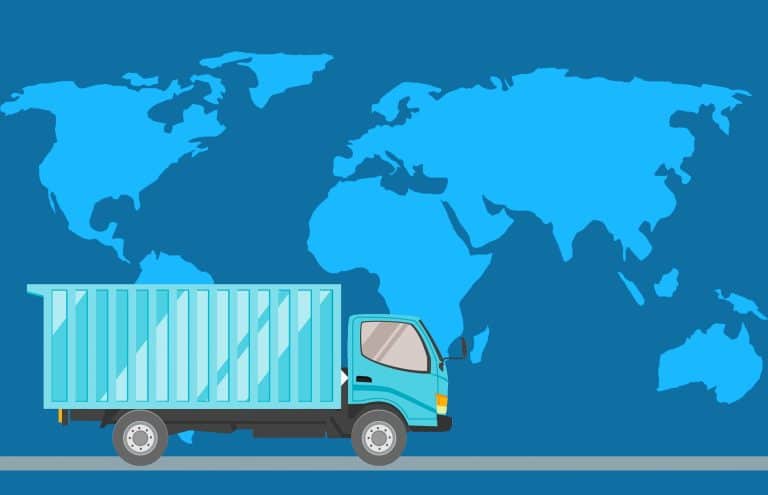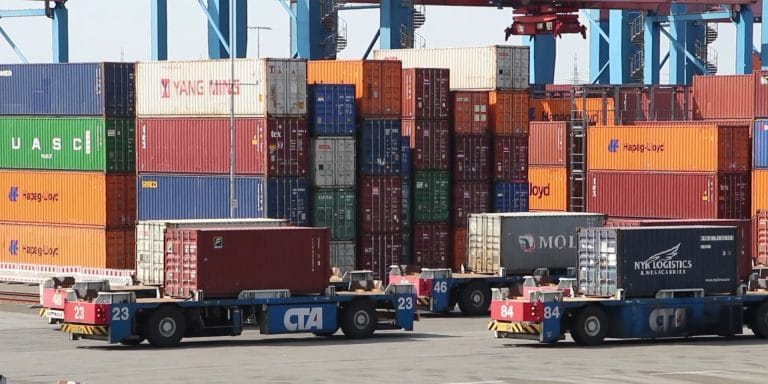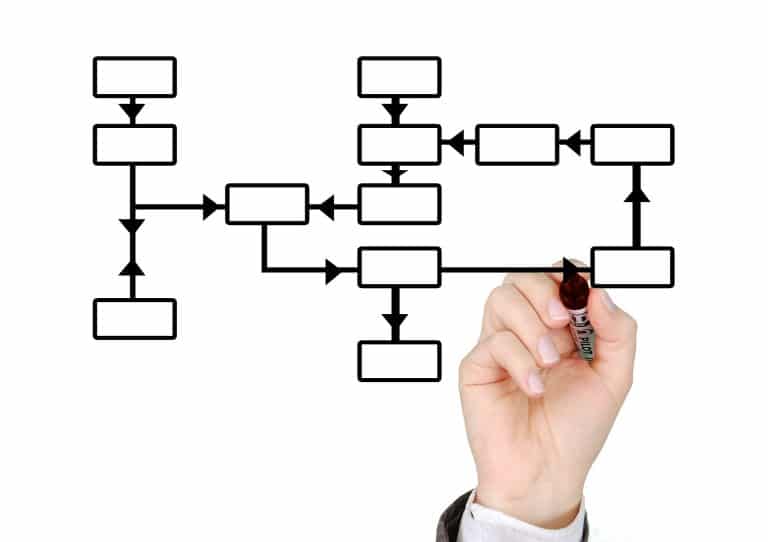Every business owner’s end goal for their business is to thrive. To achieve this, you must put effort into the necessary processes. Besides, you must ensure that customers’ orders are taken care of every time.
Moreover, strive to add some measures to make the business run well. As a result, it will leave the customers satisfied. It always feels good to receive a positive review for delivering on time.
Remember, quality services matter most in eCommerce businesses. That’s why the order fulfillment process is vital.
You can do this by implementing an order management system (OMS). It helps in ensuring that you fill-up the orders in the right way.
So, let’s learn more about order fulfillment and its main aspects.

Table of Contents
ToggleWhat Is the Meaning of Order Fulfillment?
Well, order Fulfillment is also known as supply chain or inventory fulfillment. These are vital steps.
They happen between receiving new orders and sending the goods to customers. So, the fulfillment of orders determines the delivery time as well.
The process starts with processing orders, including warehousing, picking, and shipping products.

Order Fulfillment Process: How Does It Work?
The order fulfillment process takes place in various distribution centers. It involves inventory management, supply chain management, and order processing.
Besides, it also involves quality control and support for customers. Thus, order fulfillment companies support customers when they need to report problems.
It comes in handy too when getting involved in product exchanges or returns.
Let’s have a look at the processes involved in order fulfillment.
1) Receiving Inventory.
The first step in order fulfillment is receiving inventory. It helps when your goods come from different places.
Moreover, it also helps ensure that the quality of goods is okay and you have the right amount of goods.
In short, this process helps you count the incoming inventory and get it inspected.

2) Order Processing.
An order processing management system authorizes product picking and packing. So, it happens on every received customer order.
Besides, this process gives an added advantage to online store owners. The advantage is that you can integrate order management software. As a result, all steps become automated, with no need for human involvement.
You can only do this with a shopping cart on an eCommerce website to start an automatic order processing.
3) Shipping
In the shipping process, the order redirects to a transportation channel. After that, it gets shipped to customers.
The shippers and carriers determine the freight billable costs. So it could be the actual package weight or its dimensional weight. That means whichever between the two.
But most carriers have packaging rules. These rules help them to optimize their profits from an available shipping space.
If these requirements aren’t met, be sure of delayed shipments. Well, it happens when a carrier refuses to accept an order.
But an order fulfillment agent can handle these tasks on behalf of you.
4) Inventory Storage.
When goods get received in the fulfillment center, they get inventoried. They then get distributed to short or long-term storage.
Many fulfillment companies can hold your inventory for a long time. It helps you schedule the orderly distribution of orders.
5) Picking
Automated warehouse robots help in the picking process. They select items from the warehouse as per the packing slip’s instructions.
The slip has specific information. The info consists of a list of items SKUs, the number of units, product colors, and sizes.
Moreover, it also has the distribution center’s warehouse location.

6) Packing
A packing team of fulfillment company selects the packing materials. It helps them to get the lowest practical dimensional weight.
By multiplying the package length, width, and height, you can get the weight. Optimize dimensional weight (or DIM weight) to speed transport and lower shipment costs.
You need to consider this since space on delivery trucks is at a premium.
The packing team ensures the return of shipping materials and labels. So, it helps when a customer wants to return or exchange an item for a refund.
7) Returns Processing.
Return processing is the trickiest step. One thing to note, though, is that you need to handle the process well to ensure the restocking of the goods.
It needs to happen after a customer returns a product for an exchange or a refund. Once the product is faulty, you can’t restock it.
In the return processing, you need to ensure quality control checks. Besides, you also need to check on sorting out returned products.
8) Delivery
Do you want efficient shipping and assurance that a product gets to its customers? Then, you need to have more than one carrier on shipping routes.
A carrier like FedEx may pick up a package at the fulfillment center. The USPS will later deliver it to the customer’s home.
With this kind of shipping arrangement, you are sure of the product delivery even to remote areas. USPS facilitates this kind of delivery.
What Are the Common Order Fulfillment Challenges in 2022?
Undergoing the order fulfillment process is vital in a business. But, on the flip side, it comes with challenges.
It becomes hard in the implementation of the order fulfillment process. To get into the eCommerce space, you should always aim to deliver goods on time.
eCommerce order fulfillment goes beyond doorstep delivery. That’s why you need to familiarize yourself with what it entails.
Let’s look at some of the challenges that eCommerce fulfillment has in recent times.
A) Slowness in Shipping.
The issue of slow shipping time has led a 44% of customers canceling their orders. Delay in shipping cause all this.
Customer’s needs get neglected if the processing of orders is manual. To be safe, ensure you automate your order fulfillment process.
You can also engage a suitable shipping carrier. Most of these carriers give discounts and coupons if you have a bulk order.
With this, you can offer deals to your customers. So, be sure to forge ahead of your competitors.
B) Multichannel Fulfillment.
Dealing with many online and offline stores makes it hard to balance the equation. That’s the balancing of optimized order fulfillment.
Also, there are cases of delays if orders come from different platforms. With this, be sure of wrong picked orders and delays.
The only way of curbing this is by implementing a centralized system. The system will help manage orders from all platforms along with real-time updates.
Thus, include software that will enable you to manage everything easily.
C) Inventory Management.
Most customers don’t like it when they order a product only to get a notification that it’s out of stock. They may stop ordering from you when this happens; hence, you lose them.
To avoid this, you must set up a product recorder point. You can also come up with the most significant threshold to prevent overstocking.
You can opt to do regular inventory audits to be in a position to pick inefficiencies in the system.
An inventory management system will update you about the available inventory. Besides, it will also give you the necessary insights to execute the plans.
D) Wrongly Picked Order.
Building a brand is expensive and takes time. To take care of your brand, you must ensure that your customer doesn’t get the wrong product.
Failure to do this, you may end up losing them. Thus, ensure you automate tasks for the order fulfillment process.
You can use advanced tools to drop human error. Besides, you can also set up strict quality processes and rules. These will help you to review orders before sending them out to customers.
Is Order Fulfillment Necessary?
Knowing what order fulfillment entails is an essential step in your business. An efficient order fulfillment process helps you curb damages, returns, and other issues.
So, let’s see why it’s crucial to have a proper order fulfillment process.
1) It Helps Make More Sales.
A quick order fulfillment procedure will help your business make more sales. It’s one of the best ways companies use to help their customers get their products fast.
Likewise, customers appreciate it when they know that they get the value for their money. Customers will be at ease knowing that whatever they ordered is being processed.
It will help you close more deals and earn more revenue.
2) Positive Company Impact.
Did you know that handling and fulfilling orders are much about your business? Good order is the one that is complete, delivered in time, and isn’t damaged.
If you can’t handle the requirements, be sure it will affect your business. If it happens, buyers will source their products from somewhere else.
Thus, invest in convenient and fast order fulfillment to avoid this. It will help you remain afloat in the business world.
3) It Attracts Buyers to Buy Your Goods.
To increase your customer base and sales, take care of your customer’s needs. You can only ensure this happens by having a smooth order fulfillment process.
With this, you will attract more customers and please them with your products.
Customers believe in commitment. If they order a product from you, they expect to get it on time without delays. The more you give them a reason to choose your products, the more they will stick to you over your competitors.
Thus, always have a well-outlined order fulfillment procedure. It will help you do business with satisfied customers.
How Do You Choose an Order Fulfillment Strategy?
You need to be cautious when choosing an order fulfillment strategy. That’s because you have many choices to choose from the available strategies.
Of course, you may opt to select from internal fulfillment or outsourced fulfillment. But, it depends on the resources available in your company.
Having in-house fulfillment gives you more control over operations and costs. It runs well if you handle the fulfillment processes.
If your company’s in-house talent and resources are in the middle, you can choose a hybrid model.
But what if you experience scarcity in fulfillment and logistic skills?
Then, you can outsource order fulfillment completely from a third party. It allows your team to put its focus on producing and selling the product. Moreover, it often leads to more predictability.
With internal fulfillment, you hire the staff and have warehouse ownership. It ensures that all orders are perfect.
Outsourcing order fulfillment helps curb the challenges. So, scrutinize the product, fulfillment costs, and potential fulfillment options.
What Are the Strategies to Optimize Order Fulfillment?
Competition in the eCommerce industry is huge though this shouldn’t scare you.
It will give you space to offer your customers the best. Different strategies suit different businesses. So, it’s wise to find out which will serve your business better.
1) Find out The Model That Will Work Best for You.
In-house, hybrid, drop shipping, and third-party are ways to optimize order fulfillment. You only need to find out which model will work out for you. You also need to know that your chosen model will depend on the company’s size.
Point to note, though. The in-house fulfillment works best if you have low order volume. But, third-party fulfillment works best for businesses that are hopeful of expanding.
2) Have Clear Communication with Your Warehouses and Customers.
For any business to run well, clear and direct communication comes in handy. Thus, ensure your staff handles daily tasks efficiently and follows the guidelines.
You must ensure that you’re keeping tabs on what your suppliers are up to for your products.
Strive to set a tone according to your business. Having a proper channel for communication also works well. So, you can set an online chat or call option in your store.
Communication can help you build a strong and long-term relationship with customers. Thus, always ensure you share shipment tracking information with your consumers. Besides, send them a “Thank you” note via e-mail.
3) Slotting Optimization.
It is the process of separating inventory in the warehouse. The process helps in speeding up the picking process.
To succeed in this implementation, you need to keep popular items near the shipping areas. It helps in speeding up the order fulfillment process.
Here are some ways you can strategically place the inventory in the warehouse. Depending on size, category, weight, use, size, and temperature, you can sort it out.
For the temperature-sensitive products, please keep them in one place. Moreover, you can keep the fragile items in a secured place within the warehouse.
4) Maintain Inventory Accuracy.
Inventory accuracy is vital in warehousing operations. To help maintain inventory accuracy, you need a real-time inventory tracking system.
With this, you get to save your customer from ordering an out-of-stock product. You also protect your brand image.
You may need a successful inventory management solution to avoid running out of stock. It will also help to cut down unnecessary stock.
An updated inventory sorting and indexing are vital in the picking process. It makes the complete order fulfillment process a bit faster.
5) Your Warehouse Location and Micro Warehousing.
The location where you store your products matters most in every business. That’s because it plays a significant role in business affairs.
It’s an essential aspect of your eCommerce fulfillment strategy. Customers want a speedy delivery of products and an affordable price.
To deliver as per their expectations, cut off the number of stops the package takes. That is, from the warehouse to the customer’s location. With this, shipping costs reduce, which translates to happy customers.
Many fulfillment centers have their warehouses at different locations.
It helps to cut the shipping time and cost. This method is best known as micro warehousing.
You may need to consider placing your Inventory in a different warehouse.
6) Enhance End-to-End Supply Chain.
The supply chain involves many small steps. It starts from receiving the products and ends with the final delivery.
So, real-time tracking of the supply chain comes in handy. It helps the seller and the manufacturers remain updated and plan ahead of time.
7) Smart Warehouse System.
Automated warehouse management systems have become a trend nowadays. Their technologies help to boost accuracy and efficiency and cut human errors.
These systems help in managing inventory and breaking down costs. They also help track packages and update you about the inventory in real-time.
Thus, having a detailed report of available inventory helps you predict demand. It can happen when you include a smart warehouse system.
What Are the Common Types of Order Fulfillment Process?
As mentioned earlier, there are four types of the order fulfillment process.
1) Third-party Fulfillment.
Do you have an idea how third-party order fulfillment works? A third-party logistics company (3PL) helps manage your inventory. Moreover, it packs products and ships them for on-time delivery to the customers.
3PL companies offer different plans according to your needs. These plans allow you to explore more choices. Besides, you can choose the services you want that suit your business needs.
Outsourcing fulfillment means outsourcing your worries.
2) Dropshipping
Like a third-party fulfillment, you outsource your order fulfillment process in dropshipping.
But dropshipping gives you one more advantage. It is that you don’t need to have inventory.
The method allows you to order products from the supplier or manufacturers. The suppliers handle all your orders and do the shipping to customers.
The sellers only get charged for the products they sell. It means they don’t need to buy goods in bulk. Instead, they can buy products as required.
The third-party fulfillment company doesn’t have ownership of the products. The supplier or manufacturer owns the products.
Thus, many eCommerce and startup retailers have dropshipping as their preferred choice. They hire a reliable dropshipping agent to manage their tasks.
3) In-House Fulfillment.
There’s a way to fulfill orders within your company. Your employees get to handle and complete the order fulfillment process.
It is best known as in-house fulfillment. In-house fulfillment is when you choose to do everything in-house. So you manage every process by yourself.
This process gives you complete control over every step, but it may cause an increase in mishaps. Besides, it may deny you a chance to scale up your business.
The method is suitable as a low-cost option. Thus, it is suitable for startups and already established companies.
4) Hybrid Fulfillment.
Is your company undergoing rapid expansion or needs more flexibility? Then, hybrid fulfillment would be the best option.
In this method, a company uses the order fulfillment options discussed above. You can use different order fulfillment options to put it in place.
A company may process the most selling products in-house. Likewise, it can outsource or dropship fewer selling products.
So, a company may outsource different stages of the fulfillment process. For example, it can assign shipment work to carriers or storage work to warehouses.
FAQs
1) My Order Is in Fulfillment - What Does It Mean?
When an order is in fulfillment, it is still under processing and has not shipped yet. The process gets completed when the customer receives the order.
2) What Does Logistics Fulfillment Mean?
Logistics fulfillment is a logistical process. So, it takes place from checkout till the item gets delivered. The term often gets interchanged with order fulfillment.
3) What Is the Meaning of Order Fulfillment Rate?
The order fulfillment rate is also known as the order fill rate. So, it’s a measurement to gauge efficiency.
You calculate it by dividing the number of orders processed by the total number of orders. These are orders that have already gone through processing.
4) What Does the Order Fulfillment Cycle Mean?
It refers to the duration it takes when a customer places an order until they receive it. Thus, it provides an insight into the supply chain’s effectiveness.
Final Thoughts!
Fulfilling orders is a crucial part of an eCommerce business. Though fulfilling orders is complex, it helps your business remain afloat.
Thus, ensure your online store thrives in the competitive business space. You can only manage this by having an excellent order fulfillment process. So, use the strategies mentioned above in this article.
The ultimate goal for every company selling goods and services is customer satisfaction. Once a customer gets satisfied, be sure they will place another order. With this, you generate more revenue.
Do you want to fasten the order fulfillment rate of your online store? Contact our customer executives to get the best solution.




